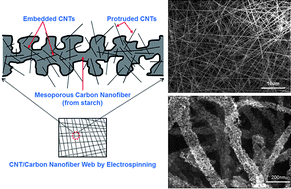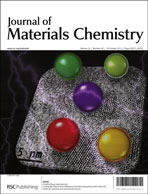A new hybrid architecture consisting of highly mesoporous CNT/carbon nanofibers from starch†
Abstract
Currently used activated carbon electrodes from commercial products contain mostly micropores (<2 nm), which are not easily accessible to electrolyte ions. Therefore, mesoporous carbons, with their more accessible porous infrastructure, are promising materials to maximize the capacitance in electrochemical capacitors. This paper reports a new hybrid carbon nanofiber architecture having mesopores with a narrow distribution, highly accessible surface area, low resistivity, and high stability by


 Please wait while we load your content...
Please wait while we load your content...